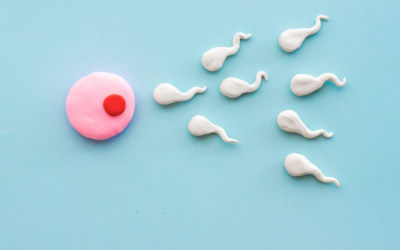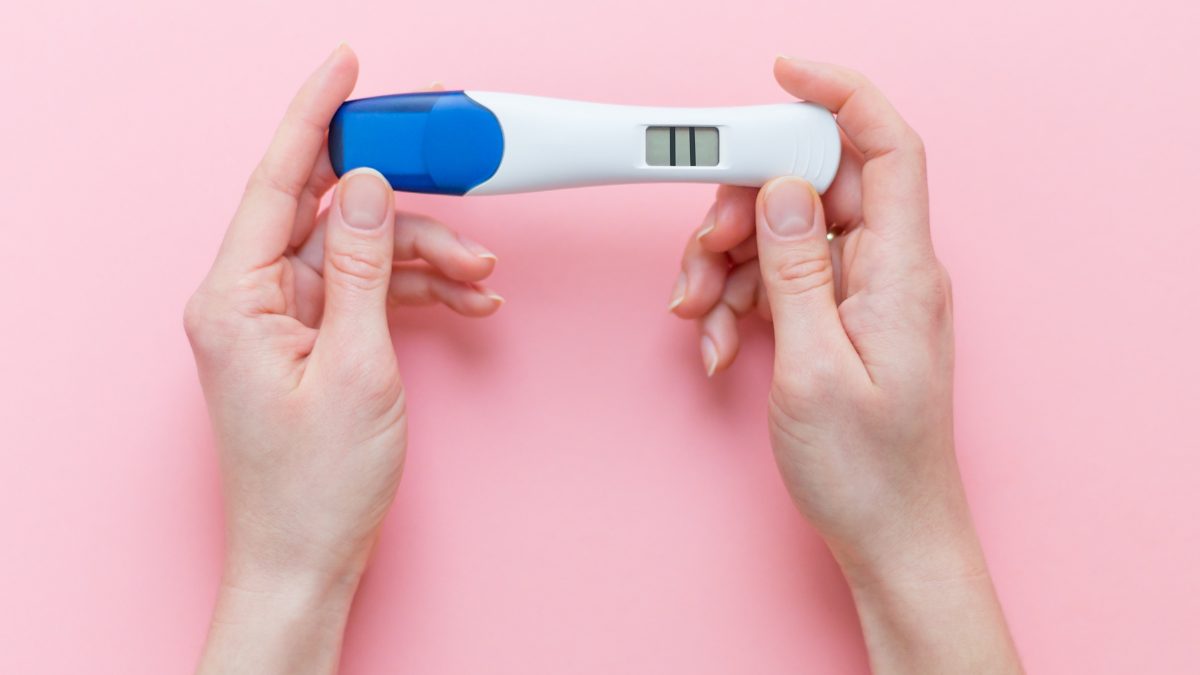Congratulations—you’ve reached 15 weeks pregnant, an exciting point in the second trimester when your baby is growing fast and many early symptoms start to fade. This week brings new changes for both you and your little one, from a blossoming baby bump to the first signs of tiny facial expressions. In this guide, you’ll discover what’s happening inside your body, how your baby is developing, and the best nutrition and self-care tips to stay healthy and comfortable as you move through week 15.
Table of Contents
Baby Development at 15 Weeks Pregnant
Your little one is now about the size of a medium apple—roughly 4 inches long and weighing close to 70 grams. Though still tiny, a lot is happening:
- Facial Features Forming: Eyes are moving toward the front of the head, ears are nearly in their final position, and delicate eyebrows may be starting to appear.
- Muscle Control: Baby can flex arms and legs, make small fists, and even practice sucking motions.
- Bones Hardening: The skeleton, which was soft cartilage, is gradually ossifying into bone.
- Lanugo Growth: A fine layer of downy hair, called lanugo, covers the skin to help regulate temperature until fat stores build up later.
- Taste Buds Developing: Tiny taste buds are forming, laying the groundwork for future feeding.
All this means your baby is becoming more active—even if you don’t quite feel those kicks yet.

Changes in Your Body at 15 Weeks
Many people notice a small baby bump around now. Your uterus has grown large enough to rise above the pelvic bone, making your pregnancy visible to others.
Common body changes include:
- Energy Boost: Morning sickness often eases, giving you more pep.
- Skin Glow: Increased blood flow can create that famous “pregnancy glow,” though some moms see mild acne instead.
- Round Ligament Pain: As your uterus stretches, you might feel sharp twinges on the sides of your belly, especially when standing quickly or sneezing.
- Breast Changes: Breasts may feel fuller and more tender as milk ducts continue to develop.
Remember, every pregnancy is unique. Some women show early, others later—it’s all normal.
Symptoms You Might Notice
Here are the most common symptoms when you’re 15 weeks pregnant and how to handle them:
- Nasal Congestion: Hormonal changes can swell the nasal passages. Use a humidifier and stay hydrated.
- Headaches: Maintain steady blood sugar by eating frequent, balanced snacks and drinking plenty of water.
- Increased Appetite: Your growing baby needs more fuel—focus on nutrient-dense foods instead of empty calories.
- Mild Dizziness: Move slowly from sitting to standing, and avoid long periods without eating.
- Occasional Leg Cramps: Stretch calves gently before bed and make sure you’re getting enough magnesium and potassium.
Nutrition Checklist for Week 15
Good nutrition is key as your baby’s growth speeds up.
Key Nutrients
- Protein: Supports rapid tissue growth. Include lean meats, eggs, beans, and tofu.
- Iron & Vitamin C: Iron helps make extra blood; vitamin C boosts absorption. Pair leafy greens with citrus or berries.
- Calcium & Vitamin D: Crucial for bone development. Enjoy milk, fortified plant milks, yogurt, cheese, and safe sunlight exposure.
- Omega-3s: Vital for brain and eye development. Add salmon (low-mercury), chia seeds, and walnuts.
Smart Snack Ideas
- Greek yogurt with berries and a sprinkle of nuts
- Whole-grain toast with avocado
- Sliced apple with almond butter
Continue taking your prenatal vitamin unless your healthcare provider advises otherwise.

Prenatal Care at 15 Weeks Pregnant
Around this time, you may have a routine prenatal visit. Here’s what to expect:
- Weight and Blood Pressure Check: To monitor healthy growth and watch for early signs of complications.
- Fundal Height Measurement: Your provider may begin measuring your uterus to track the baby’s size.
- Screening Tests: You might be offered an AFP (alpha-fetoprotein) or quad screen to assess risk for certain genetic conditions.
- Heartbeat Check: The sweetest moment—listening to the baby’s heartbeat with a Doppler monitor.
Bring a list of questions, such as safe exercise levels, recommended weight gain, or any strange symptoms.
Exercise and Movement
Regular, moderate exercise keeps your body strong and can ease common pregnancy discomforts.
- Walking: Gentle and easy to fit into daily life.
- Prenatal Yoga: Improves flexibility, reduces stress, and prepares your body for labor.
- Swimming: Provides a weightless feeling that soothes joints.
Always get medical clearance before starting a new routine and stay well hydrated.
Sleep Tips
Finding a comfortable sleeping position can be tricky. Many providers recommend sleeping on your left side to improve blood flow to the placenta.
Tips for better rest:
- Use a pregnancy pillow between your knees.
- Keep your bedroom cool and dark.
- Maintain a regular bedtime routine, even if naps are tempting.
Emotional Well-Being
The second trimester often brings a mood lift, but emotional ups and downs are still common.
- Practice deep breathing or gentle meditation.
- Journal your thoughts or start a pregnancy scrapbook.
- Talk openly with your partner about hopes, fears, and plans.
Involving Your Partner and Family
Pregnancy is a shared journey. At 15 weeks pregnant, invite your partner to:
- Attend check-ups and listen to the heartbeat.
- Help plan healthy meals.
- Join you for evening walks or prenatal yoga.
If you have older children, let them feel your belly or help choose baby names so they feel included.
Planning Ahead
This is a great time to start preparing for the months ahead.
- Maternity Clothing: Comfort is key—look for stretchy waistbands and breathable fabrics.
- Baby Registry: Begin researching strollers, car seats, and cribs.
- Financial Planning: Review insurance coverage and start a baby budget.
When to Call Your Doctor
While mild aches are normal, contact your healthcare provider if you experience:
- Heavy bleeding or fluid leakage
- Severe abdominal pain
- Sudden swelling of hands, face, or feet
- Persistent high fever
- Severe headaches or vision changes
Never hesitate to call if something feels off—your peace of mind matters.
Physical Changes You May Notice at 15 Weeks Pregnant
At 15 weeks pregnant, your body is in full second-trimester mode, and the physical shifts are easier to notice every day. Here are some of the most common changes you may experience:
- A Growing Baby Bump
Your uterus has risen above the pelvic bone, so your belly is starting to round out. Even if it’s still small, you may find your regular jeans a little snug. - Round Ligament Stretching
As the uterus expands, the ligaments supporting it stretch and can cause brief, sharp twinges—especially when you stand quickly or sneeze. - Breast Development
Breasts may feel heavier and fuller as milk ducts continue to grow. A supportive bra can reduce discomfort. - Increased Blood Volume
Your body is pumping more blood to supply oxygen to your baby, which can create that classic pregnancy glow—but it may also bring mild nosebleeds or nasal congestion. - Skin and Hair Changes
Some women notice shinier hair and stronger nails, while others see darkened skin patches known as the “mask of pregnancy.” - Weight Gain and Appetite
A gradual weight increase—often 1 to 2 pounds per week at this stage—is normal. Focus on nutrient-rich meals to match your rising appetite.
Every pregnancy is unique, so you might experience all, some, or just a few of these physical changes at 15 weeks pregnant. If anything feels severe or unusual, reach out to your healthcare provider for reassurance.
What Should I Be Feeling at 15 Weeks Pregnant?
At 15 weeks pregnant, many moms-to-be notice that the exhausting symptoms of early pregnancy start to ease while new sensations begin to appear. Here’s what you might experience around this stage:
- Boost in Energy
Morning sickness often fades, and you may feel more energetic than you have in weeks. This is a great time to enjoy light exercise, gentle walks, or prenatal yoga. - Mild Round Ligament Pain
As your uterus grows and stretches the supporting ligaments, you could feel quick, sharp twinges in your lower belly or hips, especially when you stand up or change positions. - Noticeable Baby Bump
Your uterus is now above your pelvic bone, so a small but clear bump is common. Clothes may start to feel snug around the waist. - Increased Appetite
With your baby growing rapidly, your hunger may rise. Aim for balanced meals rich in protein, iron, and calcium. - Clearer or Glowier Skin
Many women see that famous “pregnancy glow,” though some might experience breakouts instead because of hormone changes. - Occasional Headaches or Dizziness
Changes in blood flow and hormones can cause mild headaches or lightheadedness. Stay hydrated, eat regular snacks, and rest when needed.
Remember, every pregnancy is different. Some women feel most of these symptoms, while others notice only a few. If you ever have severe pain, heavy bleeding, or anything that feels worrying at 15 weeks pregnant, contact your healthcare provider promptly for guidance and peace of mind.

What to Avoid at 15 Weeks Pregnant
At 15 weeks pregnant, you’re well into the second trimester and may be feeling better than in the early weeks. But there are still important precautions to keep both you and your baby safe. Here’s a comprehensive list of things to steer clear of:
1. Certain Foods and Drinks
- Raw or Undercooked Meats and Fish – Can carry harmful bacteria or parasites.
- Unpasteurized Dairy and Juices – Risk of Listeria and other infections.
- High-Mercury Fish – Such as shark, swordfish, king mackerel, or tilefish.
- Excess Caffeine – Limit total intake (coffee, tea, chocolate, energy drinks) to approximately 200 mg per day.
- Alcohol – No amount is proven safe during pregnancy.
2. Harmful Substances
- Tobacco or Vaping – Raises the risk of low birth weight and other complications.
- Recreational Drugs – Can interfere with fetal growth and brain development.
- Certain Medications and Herbal Supplements – Always check with your doctor before taking over-the-counter pills, herbal teas, or remedies.
3. High-Risk Activities
- Contact Sports and High-Impact Exercise – Avoid anything with a risk of falls or abdominal trauma (like kickboxing, horseback riding, or skiing).
- Hot Tubs, Saunas, or Very Hot Baths – Overheating can raise your core temperature and may pose a risk to your developing baby.
- Heavy Lifting – Can strain your back and pelvic muscles; ask for help with bulky loads.
4. Environmental Exposures
- Harsh Chemicals – Limit exposure to strong cleaning agents, pesticides, and paint fumes.
- Secondhand Smoke – Increases risks similar to smoking itself.
- X-Rays – Only undergo when necessary and with your provider’s approval.
5. Lifestyle Habits to Rethink
- Skipping Prenatal Appointments – Regular check-ups track your baby’s growth and catch potential issues early.
- Extreme Dieting or Fasting – You and your baby need steady nutrients.
- Sleeping Flat on Your Back for Long Periods – As your uterus grows, this position can press on major blood vessels; side-sleeping is more comfortable and safer.
Risk of Miscarriage at 15 Weeks Pregnant
By the time you reach 15 weeks pregnant, the likelihood of miscarriage has dropped significantly compared with the first trimester. While every pregnancy is unique, here are some key points to understand:
General Statistics
- Overall Risk: Most studies show the risk of miscarriage after the 14-week mark is well under 1% for women with an uncomplicated pregnancy.
- Timing Matters: The highest risk is in the first 12 weeks (about 10–15%). Once you pass the end of the first trimester, the chance decreases dramatically.
Factors That Can Influence Risk
Even at 15 weeks, certain issues can slightly raise the odds of a loss. These may include:
- Chromosomal or Genetic Conditions – Usually detected earlier, but occasionally identified later.
- Problems with the Placenta or Cervix – Such as an incompetent cervix or placental abruption.
- Maternal Health Conditions – Uncontrolled diabetes, high blood pressure, or certain infections.
- Lifestyle Factors – Smoking, heavy alcohol use, or drug use.
Warning Signs to Watch For
Contact your healthcare provider right away if you experience:
- Heavy vaginal bleeding or passing clots
- Severe abdominal or back pain
- A sudden gush of fluid
- Fever or chills
These symptoms don’t always mean a miscarriage is happening, but they do require immediate medical attention.
How Much Weight Should You Gain by 15 Weeks Pregnant?
By the time you’re 15 weeks pregnant, your body is steadily supporting your baby’s growth, and gradual weight gain is both normal and healthy. The exact amount depends on your pre-pregnancy weight and individual health factors, but general medical guidelines offer a helpful range.
Typical Weight Gain by Week 15
- Average Total Gain So Far: About 4 to 5 pounds (1.8–2.3 kg) is common by this stage.
- Weekly Rate in the Second Trimester: Once you’ve entered the second trimester, many providers suggest gaining roughly 1 pound (about 0.5 kg) per week.
Remember, these numbers are averages—some women gain a little more or a little less and still have a perfectly healthy pregnancy.
Adjusting for Pre-Pregnancy BMI
Healthcare professionals often tailor recommendations based on your body mass index (BMI) before pregnancy:
| Pre-Pregnancy BMI | Total Gain Recommended | By 15 Weeks (Approx.) |
|---|---|---|
| Underweight (<18.5) | 28–40 lbs (12.5–18 kg) | ~5–8 lbs (2.2–3.6 kg) |
| Normal (18.5–24.9) | 25–35 lbs (11–16 kg) | ~4–6 lbs (1.8–2.7 kg) |
| Overweight (25–29.9) | 15–25 lbs (7–11 kg) | ~3–5 lbs (1.4–2.3 kg) |
| Obese (≥30) | 11–20 lbs (5–9 kg) | ~2–4 lbs (0.9–1.8 kg) |
These ranges are guidelines—your doctor or midwife may give more personalized targets.
Tips for Healthy Weight Gain
- Eat Balanced Meals: Focus on lean proteins, whole grains, fruits, vegetables, and healthy fats.
- Stay Active: Gentle exercise like walking or prenatal yoga can help manage weight and improve circulation.
- Hydrate Well: Water supports amniotic fluid and overall health.
- Listen to Hunger Cues: Aim for steady, moderate intake rather than “eating for two.”
Is the Baby Fully Developed at 15 Weeks Pregnant?
At 15 weeks pregnant, your baby is growing quickly, and many essential organs and systems are in place—but “fully developed” is still months away. Here’s what’s happening inside the womb at this stage:
What’s Already in Place
- Major Organs: The heart, brain, kidneys, liver, and lungs have all formed and are functioning at a basic level.
- Limbs and Joints: Arms and legs can bend, and tiny hands can make fists.
- Facial Features: Eyes and ears are in position, and baby can make small facial expressions.
- Skeleton: The cartilage framework is hardening into bone.
- Taste Buds and Nerves: Early taste buds and nerve connections are developing.
What’s Still Developing
Even though these structures exist, they’re still maturing and won’t be ready for life outside the womb for many weeks:
- Lungs: Need to grow air sacs and produce surfactant for breathing after birth.
- Brain: Continues to form complex connections and regions.
- Immune System: Still too immature to fight infections independently.
- Fat Stores: Important for temperature regulation, but significant fat won’t build up until the third trimester.
Conclusion: Embracing Your 15-Week Milestone
Reaching 15 weeks pregnant is a wonderful point in your second trimester. Your baby’s tiny body is forming bones, practicing movement, and developing organs, while you may be noticing more energy, a blossoming bump, and new sensations.
Focus on balanced nutrition, gentle exercise, and consistent prenatal care to support both your health and your baby’s steady growth. Keep listening to your body—every pregnancy is unique, and small differences are normal.
As you move toward the weeks ahead, celebrate this exciting stage and the progress you and your baby have already made. With mindful self-care and regular check-ups, you’re giving your little one the best start for the journey to birth and beyond.







